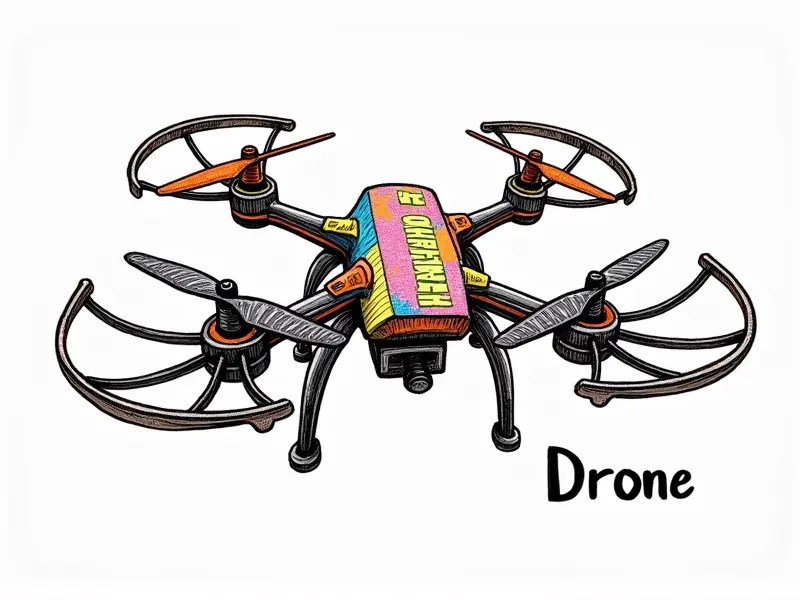Can I use Li-Po in cold weather?

How Cold is Too Cold for LiPo Batteries?
Lithium Polymer (LiPo) batteries are a staple in the world of RC flying, but their performance can be significantly affected by cold weather. The question many enthusiasts ask is: how low can the temperature go before it becomes too cold to use these batteries? In general, LiPo batteries start showing signs of reduced performance when temperatures drop below freezing (0°C or 32°F). However, severe cold can cause even more significant issues.
LiPo Batteries in Winter: Performance Issues Explained
The primary concern with using LiPo batteries in cold weather is the decrease in capacity and power output. Cold temperatures slow down chemical reactions within the battery, leading to a reduced discharge rate and shorter flight times. Additionally, extreme cold can cause internal resistance to increase, which means that the battery will heat up more quickly during use but may not provide consistent power.
Capacity Reduction
- Degradation in Capacity: At freezing temperatures, LiPo batteries typically lose around 20% of their capacity. This reduction can be even higher at sub-zero temperatures.
- Power Output Decline: The power output drops significantly as the temperature decreases, impacting motor performance and overall flight stability.
Internal Resistance Increase
- Rise in Internal Resistance: Cold temperatures cause an increase in internal resistance within the battery cells, leading to a higher voltage drop during discharge.
- Heat Generation: The increased internal resistance results in more heat generation when discharging, which can be problematic if not managed properly.
Flying RC with Cold LiPo Batteries
Flying RC drones or planes with cold batteries requires careful planning and consideration. Here are some key points to keep in mind:
- Pre-Flight Battery Warm-Up: Before flying, it’s essential to warm up the battery by keeping it indoors until just before takeoff.
- Monitor Voltage Closely: Keep a close eye on your multimeter readings to ensure that the voltage remains within safe operating limits.
- Avoid Overheating: Be cautious of sudden temperature spikes during flight, which can lead to overheating and potential damage to the battery.
LiPo Battery Function in Frosty Weather
The functionality of LiPo batteries is directly impacted by frosty conditions. Cold weather not only affects their performance but also poses risks such as reduced safety margins, increased risk of failure due to internal resistance spikes, and potential damage from thermal shock.
Risk Factors
- Reduced Safety Margins: Lower temperatures reduce the buffer between normal operation and dangerous conditions like over-discharge or overheating.
- Potential for Failure: High internal resistance can lead to sudden voltage drops, causing motors to stall or fail during flight.
Tips for Using LiPo Batteries in the Cold
To ensure optimal performance and longevity of your LiPo batteries when flying in cold weather, follow these tips:
- Store Indoors: Keep batteries stored indoors where they can remain at room temperature.
- Use Battery Warmers: Consider using battery warmers or insulating wraps to maintain a stable temperature before and during use.
- Avoid Rapid Charging: Avoid rapid charging in cold conditions as it increases the risk of damage due to increased internal resistance.
Battling the Elements: LiPo in Cold Weather
Flying RC drones or planes in cold weather requires a strategic approach. Here are some tips for battling the elements:
- Pre-Flight Checks: Conduct thorough pre-flight checks to ensure all components, including batteries, are functioning correctly.
- Insulation: Use thermal insulation around battery packs to maintain a stable temperature during flight.
- Battery Management: Implement a robust battery management system that monitors and regulates the temperature of each cell.
LiPo Battery Survival Guide for Winter Flyers
To ensure your LiPo batteries survive winter flying conditions, adhere to these guidelines:
- Keep Batteries Warm: Use insulation or battery warmers to keep batteries at an optimal temperature.
- Avoid Overheating: Monitor the battery closely for signs of overheating and take corrective action immediately.
- Optimize Charging Practices: Charge your batteries in a controlled environment, avoiding rapid charging techniques that can be harmful at low temperatures.
Can LiPo Batteries Handle Frosty Conditions?
The ability of LiPo batteries to handle frosty conditions depends on several factors. While they are generally robust and reliable, extreme cold can compromise their performance and longevity. By following best practices such as pre-flight battery warm-up, careful monitoring during flight, and proper storage techniques, you can mitigate the risks associated with flying in cold weather.
Flying RC Drones in Cold Weather
When flying RC drones in cold weather, it’s crucial to take extra precautions. Here are some key considerations:
- Battery Warm-Up: Ensure your batteries are at room temperature before use.
- Voltage Monitoring: Regularly check battery voltage during flight to avoid over-discharge.
- Avoid Rapid Charging: Opt for slower charging methods in cold conditions to prevent damage.
Optimal Battery Use in Cold Temps
To achieve optimal performance from your LiPo batteries in cold temperatures, follow these best practices:
- Warm-Up Periods: Allow adequate warm-up time before flying to ensure the battery reaches an operational temperature.
- Battery Insulation: Use thermal insulation wraps or bags to maintain a stable temperature during flight.
- Voltage Regulation: Utilize voltage regulators and monitoring systems to prevent over-discharge and overheating.
Tips for Cold Weather RC Flying
Flying RC drones in cold weather requires careful planning and execution. Here are some additional tips to ensure a successful flight:
- Pre-Flight Inspections: Conduct thorough pre-flight inspections focusing on battery condition.
- Avoid Long Storage Times: Limit the time batteries spend in cold storage before use.
- Use Battery Warmers: Invest in quality battery warmers to maintain optimal temperature during flight.
Conclusion
Flying RC drones or planes with LiPo batteries in cold weather presents unique challenges. By understanding the impact of low temperatures on battery performance and following best practices such as pre-flight preparation, thermal insulation, and careful monitoring, you can ensure safe and successful flights even in frosty conditions.

